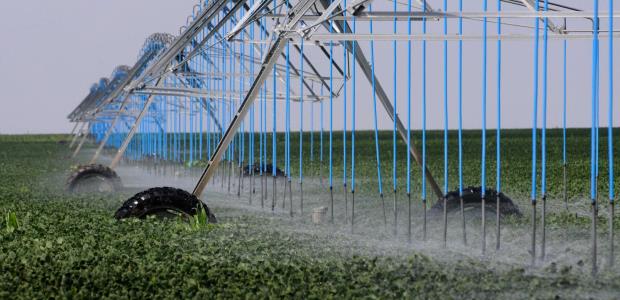
Facing Growing Water Demand Without Aquifers
With the demand for water in this country and around the world growing significantly every year, we won't have the luxury of waiting thousands of years for these aquifers to carry water again.
In July 2014, a family that had just purchased a new home in an area of Arizona called Sulphur Springs had an unusual experience. One of the family members began filling a glass of water, and instead of clean, clear water coming out of the tap, it was cloudy and brown. "The water looked like the desert surrounding the house," said the family member. "The same color."
At first, the family did not suspect anything was wrong. In fact, after a few minutes of running the water, it turned clear again. However, then things turned south once more. Not only was the water cloudy and brown, in more and more cases, there wasn't any. One of the family members drew a bath. When she returned to the bathroom, the water was murky with silt, and the tub was barely half full.The washing machine stopped working, as did the dishwasher. Reason: no water.
However, then something else happened. The family found out that other people living in this part of Arizona were also having the very same experiences. Eventually, they found out what was happening.
This portion of Arizona is perfect for growing crops year round, and it has recently been "discovered" by corporate farmers. They are bringing millions of dollars with them and purchasing as much as 100,000 acres of land to be used for farming. Land use regulations in this part of the state are a bit lax.
However, it is also one of the driest parts of Arizona. So to irrigate their crops, they have been drawing on the aquifers. Aquifers are naturally formatted, underground water storage areas that can and do supply water for everyone—farmers, ranchers, businesses, schools, and families—in that part of the state. The problem is, the aquifers are drying up.
How They Were Formed
Except for in a few states such as Arizona, New Mexico, parts of Texas, and California, we rarely hear much about aquifers. That is because, for decades, most parts of the United States received enough rainfall that turning to aquifers for water was just not necessary.
However, that has all changed in the last 20 years or more. We are drawing water from aquifers more and more for the same reasons we have heard before: climate change impacting rainfall amounts; population growth; poor water infrastructure; and, as our Arizona story reveals, a redirection of water from families, ranchers, and small farmers to expanding corporate farms. Most likely, we will hear more stories like this in the future. This is because aquifers are going to be playing a more significant role in providing water for more parts of the country. So this is probably a good time to learn a little bit about aquifers and how they were formed.
Most of the aquifers in the United States lie under the western half of the country and are believed to date back a good 6 million years. Scientists believe that as the Rocky Mountains thrust upwards, this caused rivers to create deep channels, with water flowing into basins later covered by rock. This trapped the water beneath it.
One of the largest aquifers in the United States runs through eight Plains states and covers more than 174,000 square miles. It is not a vast underground lake, by any means. Aquifers are underground layers of rock that are saturated with water, which can be brought to the surface through natural springs or by pumping.
Not only are these aquifers drying up, just like the ones in Arizona; once they do, it can take as much as 6,000 years for them to get replenished. With the demand for water in this country and around the world growing significantly every year, we won't have the luxury of waiting thousands of years for these aquifers to carry water again.
Options
When it comes to water, we really only have one option: use it more efficiently. We do not have to conserve. In fact, water conservation does not work all that well. It typically results in unhappy people, tired of conserving water and waiting to go back to their old water-using habits.
However, water efficiency is different. Typically, it comes about by swapping out old water using fixtures and mechanicals that waste large amounts of water. These are replaced with new fixtures and technologies that are not as wasteful and use far less water, or no water at all. Plus, this is accomplished without end-user dissatisfaction.
It's going to be difficult to help the people in Sulphur Springs, Ariz. The state is taking emergency measures to deliver water to this area. However, for most of the rest of the country, we do have time to address our water challenges by using this precious resource more efficiently.
Reference
Arizona Story Source: "The Water Wars of Arizona," by Noah Gallagher Shannon, The New York Times, July 19, 2018